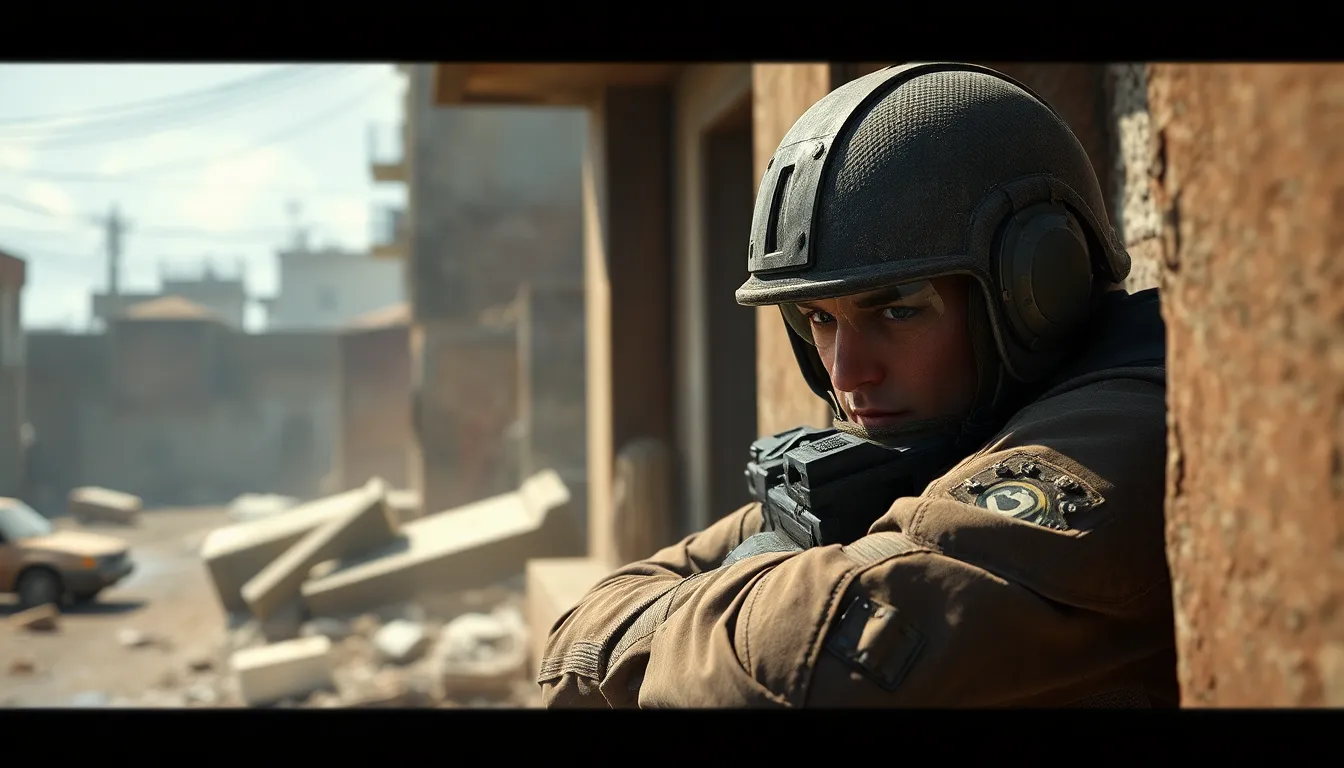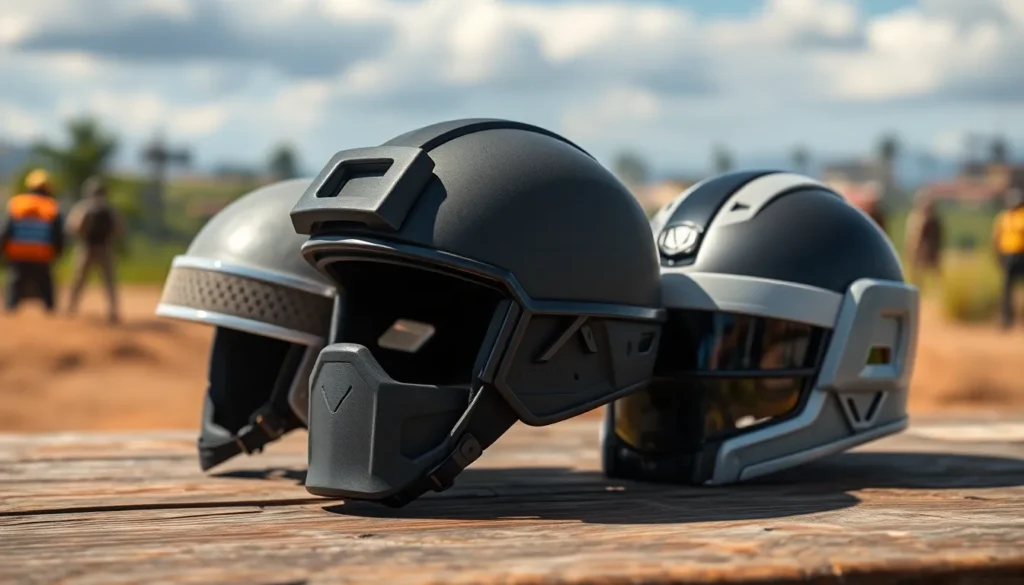Table of Contents
ToggleIn the chaotic battlegrounds of PUBG, survival often hinges on the right gear. Among the most crucial pieces of equipment? The helmet. It’s not just a fashion statement; it’s your ticket to living another day. With various helmet levels, players can find themselves in a conundrum: which one’s worth the loot?
Overview of PUBG Helmet Levels
Helmets in PUBG come in three distinct levels, each providing different protection levels against gunfire. Level 1 helmets offer minimal defense, absorbing up to 30 damage while protecting against headshots. These helmets are lightweight and often easily found early in matches.
Level 2 helmets provide a significant improvement in protection compared to Level 1 options. These can absorb up to 50 damage, making them a popular choice during mid-game scenarios when encounters become more frequent.
Level 3 helmets rank as the strongest. Capable of absorbing up to 70 damage, these helmets also defend against all headshot types. Securing a Level 3 helmet can greatly enhance a player’s chance of survival in intense firefights.
Additionally, helmets exhibit a variety of visual designs and colors that add an aesthetic appeal to players’ characters. Although this style may be a consideration for some, the primary purpose remains the protection helmets provide.
Finding and equipping the best helmet significantly impacts gameplay. Players often weigh the effort needed to secure higher-level helmets against the potential benefits during matches. Understanding each helmet’s strengths aids in making informed decisions, ultimately shaping the strategies players adopt in PUBG.
Level 1 Helmets

Level 1 helmets serve as the entry-level option in PUBG, providing basic protection for players. While these helmets aren’t ideal for intense combat situations, they offer essential defense in early-game encounters.
Features and Protection
Level 1 helmets absorb up to 30 damage, making them a viable choice during initial stages. Players can find them scattered across the map, often in buildings or on crates. Their lightweight design allows for easy maneuverability and quick access. These helmets primarily protect against non-headshot damage, reducing overall damage taken from initial skirmishes. Their aesthetic designs may appeal to players, but their core function remains focused on protection during early-game moments.
Advantages and Disadvantages
Level 1 helmets come with both strengths and weaknesses. One significant advantage lies in their availability; players can often locate them quickly. They offer decent protection against lower-caliber weapons, reducing the chances of being eliminated early. On the downside, their limited damage absorption may leave players vulnerable to stronger attacks. They might not withstand sustained fire from more powerful weapons, necessitating a quicker upgrade to higher-level helmets. Players must balance their use of Level 1 helmets against the increased risks of ongoing conflict.
Level 2 Helmets
Level 2 helmets enhance protection during gameplay, absorbing up to 50 damage. Players often find these helmets as a reliable choice for early to mid-game phases.
Features and Protection
Level 2 helmets offer improved defensive capabilities compared to Level 1 helmets. Their design ensures protection against various weapon types, including mid-tier firearms. Specifically, they absorb more damage from headshots, making it harder for opponents to take players down quickly. Enhanced durability allows players to engage in battles with greater confidence. Additionally, players can find these helmets in various locations across the map, leading to a higher chance of acquisition.
Advantages and Disadvantages
Level 2 helmets provide several advantages in combat scenarios. They deliver strong protection and help players survive encounters with better-equipped opponents. While lightweight, their balance of protection and mobility aids in maintaining agility during fights. However, limitations exist; they cannot withstand as much damage as Level 3 helmets. Additionally, players may encounter opponents with high-tier weaponry, making the effectiveness of Level 2 helmets variable. Prioritizing upgrades remains essential for ensuring survivability in intense battles.
Level 3 Helmets
Level 3 helmets stand as the pinnacle of head protection in PUBG, capable of absorbing up to 70 damage. Players equipped with these helmets find themselves at a distinct advantage in various combat situations.
Features and Protection
These helmets boast superior designs that offer maximum defense against all headshot types. Players gain enhanced durability, helping to mitigate the impact from high-caliber weapons. Level 3 helmets also provide noticeable visual appeal, often featuring unique skins that attract players. They possess a lightweight construction, allowing for mobility while prioritizing safety. Effective protection in the heat of battle helps players maintain confidence when engaging opponents.
Advantages and Disadvantages
One significant advantage of Level 3 helmets is their impressive damage absorption of up to 70. They protect against virtually all forms of headshot damage, making them indispensable in late-game scenarios. However, finding one can be challenging, as these helmets spawn less frequently compared to their lower-level counterparts. Players may encounter situations where they face enemies wielding high-tier weapons, emphasizing the importance of locating upgraded helmets quickly. The trade-off between rarity and protection makes strategizing important for survival in intense situations.
Comparison of Helmet Levels
Comparing helmet levels in PUBG reveals distinct advantages and limitations for players. Level 1 helmets provide minimal protection, absorbing up to 30 damage. These helmets are widely available and serve as an entry point for new players. Although they may protect against weaker attacks, they leave players vulnerable to more powerful weapons.
In contrast, Level 2 helmets absorb up to 50 damage, making them a more reliable choice. Players can gain better protection during early to mid-game phases. Engaging in battles with confidence becomes easier thanks to improved defense against mid-tier firearms. Lightness adds mobility, yet they still fall short against high-tier weaponry, emphasizing the need for quick upgrades.
Level 3 helmets represent the highest tier of protection, capable of absorbing up to 70 damage. Maximum defense against all headshot types comes with this upgrade, making players more resilient against high-caliber weapons. While these helmets prove invaluable in late-game scenarios, their lower spawn rates make them challenging to find. Strategic planning becomes crucial to secure these protective gears in critical moments.
Understanding the differences among helmet levels helps players make informed decisions based on their gameplay style. Prioritizing upgrades ensures better survivability in intense encounters. Using Level 2 or Level 3 helmets greatly enhances a player’s chance of success in surviving longer. Ultimately, comparing these helmet levels allows players to select the best options fitting their strategies.
Mastering the nuances of helmet levels in PUBG is vital for any player aiming for survival. Each helmet level has its unique strengths and weaknesses that can significantly impact gameplay. While Level 1 helmets offer basic protection for early encounters, they quickly become inadequate against stronger weapons. Level 2 helmets provide a solid balance for mid-game strategies, allowing players to engage with more confidence.
However, for those seeking maximum defense, Level 3 helmets are unparalleled. Their rarity demands careful planning and swift action to secure them. Ultimately, understanding helmet levels and their implications on gameplay can enhance a player’s strategy, making informed decisions crucial for success in the intense battles of PUBG.




